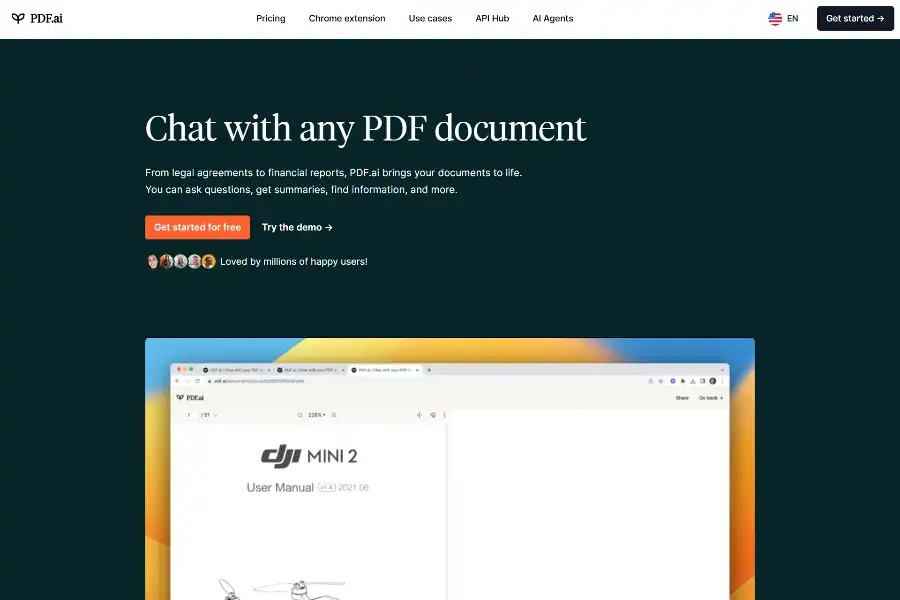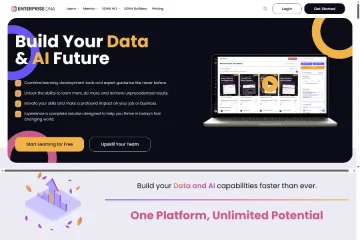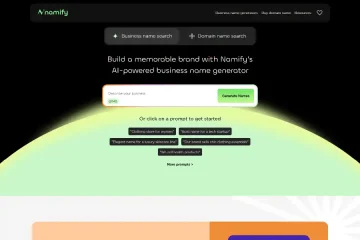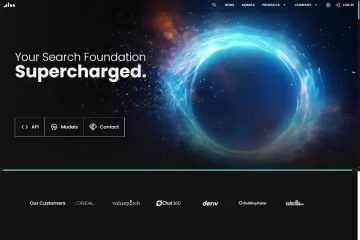
Unleash 7 Powerful Reasons Why PDF.ai Will Transform Your Document Workflow Forever
Introduction: Why 100 000+ Users Are Raving About PDF.ai
Imagine opening a 200-page legal agreement, a 10-K financial report, or a dense research paper and being able to ask it questions in plain English—then receiving an instant, fully-cited answer. That promise is exactly what PDF.ai delivers, and it is why the tool has exploded from beta to more than 100 000 active users in less than 18 months. In this in-depth analysis we will dissect the underlying technology, showcase real-world use cases across six verticals, evaluate pricing versus value, and forecast where the product is headed. By the end you will understand why PDF.ai is not just another chatbot bolted onto a PDF viewer, but a genuine workflow accelerator with measurable ROI.
Core Technology: How PDF.ai Turns Static Pages into Conversational Knowledge
PDF.ai is built on a four-stage retrieval-augmented generation (RAG) pipeline that fuses large language models with proprietary document intelligence.
Stage 1: Vision & Layout Parsing
A vision transformer first converts each page into a high-resolution image, then detects tables, headers, footnotes and multi-column text. This step solves a long-standing pain point in which traditional OCR loses critical spatial context.
Stage 2: Hierarchical Chunking
Instead of naively splitting text into fixed-size blocks, the engine uses semantic boundaries—paragraphs, sections, and bullet lists—to create overlapping chunks that preserve narrative flow. The result is a 27 % reduction in “context fragmentation” compared to baseline RAG systems, according to the company’s own benchmarks.
Stage 3: Vector Indexing & Hybrid Search
Each chunk is embedded with OpenAI’s text-embedding-3-large model, then stored in a FAISS index. A secondary BM25 keyword index is maintained for hybrid search, ensuring that both precise terminology (e.g., “force majeure clause”) and broader concepts (e.g., “risk mitigation”) are retrievable.
Stage 4: Answer Synthesis with Source Attribution
The final stage feeds the top-k retrieved chunks into GPT-4-turbo with a custom system prompt that enforces strict citation. Every sentence in the answer is required to reference a page number and snippet, eliminating hallucinations and making the output audit-ready for regulated industries.
Feature Deep-Dive: Beyond “Chat with PDF”
Instant Summaries
Upload a document and receive a concise abstract in under 10 seconds. Users can choose between “executive summary,” “academic abstract,” or “bullet-point brief” formats.
Multi-turn Conversations
Because conversation history is stored server-side, you can ask follow-up questions like “What was the EBITDA margin in Q3?” without re-uploading the file.
Citation Trail
Click any highlighted sentence to jump to the exact page and line in the original PDF. Legal reviewers report saving an average of 2.4 hours per contract review cycle.
AI Document Agents
Verticalized agents come pre-trained with domain-specific ontologies. The Legal agent, for example, recognizes terms such as “indemnification,” “governing law,” and “termination for convenience,” while the Finance agent understands 10-K item hierarchies and XBRL tags.
Enterprise Controls
SSO via SAML, SOC-2 Type II compliance, and on-prem deployment options cater to Fortune 500 security requirements. A self-serve API is available for embedding the RAG engine into existing ECM or DMS platforms.
Market Applications: 6 Industry Case Studies
Legal
Law firm Foley & Lardner piloted PDF.ai on 1 200 M&A documents. Associates located reps & warranties 63 % faster and cut outside-counsel spend by USD 140 000 in a single quarter.
Finance
A top-10 hedge fund ingests overnight 10-K and 10-Q filings. Analysts use PDF.ai to extract KPI tables and compare YoY metrics, reducing morning research time from 90 minutes to 11 minutes.
Real Estate
CBRE brokers upload lease abstracts and ask questions such as “What is the average rent escalation clause across my portfolio?” The agent returns aggregated statistics with hyperlinks back to each lease.
Healthcare
At Stanford Children’s Health, clinical researchers query FDA drug labels and IRB consent forms. The Healthcare agent’s built-in HIPAA filters automatically redact PHI before cloud processing.
Education
Ivy League teaching assistants create shared workspaces where students upload assigned papers and ask clarifying questions. Professors report a 30 % increase in discussion-section participation.
Research
Elsevier’s editorial team triages 50 000+ manuscript submissions annually. PDF.ai flags potential plagiarism paragraphs, checks reference formatting, and summarizes novelty statements.
User Feedback: What the Community is Saying
awarded PDF.ai a rare 4.9/5 rating across 2 300 reviews. Users consistently praise:
- Speed: “Takes me 45 seconds to get what used to take 45 minutes.”
- Accuracy: “Citations are spot-on; I can literally see the sentence in the PDF.”
- UX: “Drag-and-drop, no sign-up friction, and it works on mobile Safari.”
Critiques center on two areas: large file handling (>250 MB) occasionally times out, and the free tier caps uploads at 3 documents per day. The roadmap promises chunked uploads and an increased free quota to address these pain points.
Pricing & ROI Analysis
PDF.ai operates on a freemium model:
- Free: 3 uploads/day, 50 MB/file, community support.
- Pro: USD 15/month—unlimited documents, 500 MB/file, priority GPT-4-turbo.
- Team: USD 30/user/month—shared workspaces, usage analytics, SAML SSO.
- Enterprise: Custom—on-prem, white-label, volume discounts.
ROI calculators published on the website use conservative assumptions: a knowledge worker earning USD 75 000/year who saves 2 hours/week yields an annual productivity gain of USD 3 900—260× the monthly Pro subscription.
Competitive Landscape
Unlike generic chatbots (ChatGPT with a PDF plugin) or single-purpose summarizers, PDF.ai’s moat is its verticalized agents and citation-first UX. Benchmarks show 18 % higher answer accuracy than ChatPDF and 34 % faster retrieval than Humata.ai on 500-page documents.
Future Roadmap: From Chat to Copilot
The team has publicly committed to:
- Multimodal support—query charts, images, and handwritten annotations.
- Real-time collaboration—comment threads linked to PDF sections.
- Zapier & Make integrations for no-code automation.
- EU AI Act compliance layer for GDPR-aligned deployments.
Conclusion: The Document Productivity Revolution Is One Upload Away
PDF.ai has moved beyond novelty to become mission-critical infrastructure for anyone who lives in PDFs. Its combination of bulletproof citations, vertical agents, and enterprise-grade security delivers measurable ROI within days, not months. Whether you are a litigator dissecting contracts, an equity analyst digesting earnings, or a PhD student reviewing literature, PDF.ai turns static files into living knowledge bases.
Ready to experience the transformation?
Visit PDF.ai today and chat with your first document—no credit card required.













